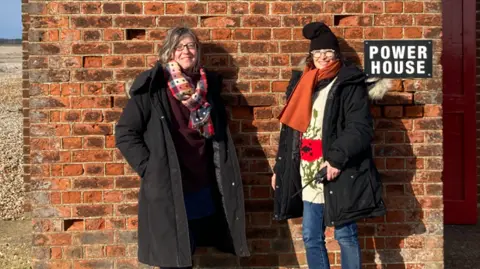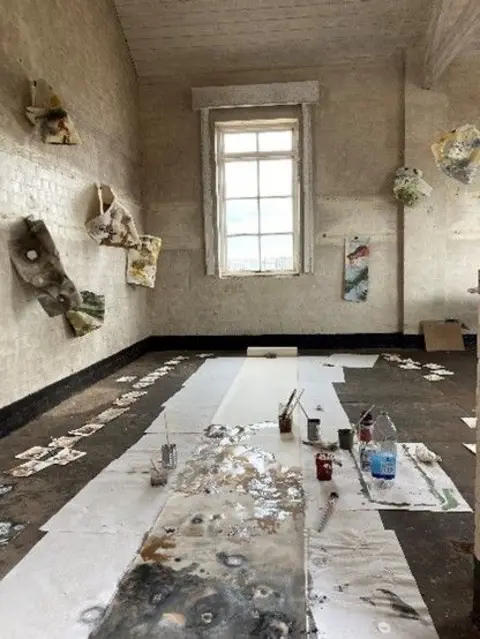Artists to explore history of former weapons site
 University of Suffolk
University of SuffolkArtists from Suffolk and around the world will explore the rich history of a former weapons development site through a series of short-term residencies.
The Research Art Lab project, led by the National Trust and the University of Suffolk, will see one of Orford Ness's former military buildings turned into a temporary studio.
Over the summer it will be occupied by 11 different creatives from Suffolk, London or California, each of whom will produce pieces inspired by the unusual landscape.
Now owned by the National Trust as a nature reserve, Orford Ness is a vegetated shingle spit previously used by the Ministry of Defence, make weaponry during both world wars and the Cold War.
 Justin Minns/National Trust Images
Justin Minns/National Trust ImagesThe present and past of the site will act as the stimulus for the artists, who will create everything from sculptures, paintings and films to performances and installations.
During their three-week residencies they will explore and incorporate early camouflage techniques and colour palettes and contemporary botanical drawings inspired by the flora found on the shingle and marshland.
And during open days at Orford Ness visitors will be able to see the process of "creative research and experimentation" in real time as it happens.
Glen Pearce, property operations manager at Orford Ness, said the landscape had long "inspired artists and creatives from all walks of life".
"We're really excited to see how this fascinating landscape, with its complicated history, further inspires artists and visitors this year," he said.
 Jane Watt
Jane WattOrford Ness - facts
- The ness is a 10-mile long (16km) stretch of shingle that runs south from Aldeburgh to the mouth of the River Ore at Shingle Street
- Its best-known buildings are the "pagodas" that were used for testing military nuclear devices
- Access for the public, which began in 1995, is via National Trust boat from Orford
- The eastern side of the ness was home to the Orfordness lighthouse, although that was demolished in due to the threat of erosion
- Pop musician Thomas Dolby made a film about the last days of the Orfordness lighthouse
- Another art projects based at the ness include the Stone Eye group and Robert Mcfarlane, who wrote the book Ness in collaboration with Radiohead artist Stanley Donwood
'Unique and special'
Orford Ness was active from World War One until the late 1980s and home to six large test cells that were built to carry out environmental tests on the atomic bomb.
Since being sold by the Ministry of Defence to the National Trust in 1993 it has become home to wildlife, including birds, seals, hares and vegetated shingle.
Dr Jane Watt, artist and senior lecturer in fine art at the University of Suffolk, was the first of the artists to complete a residency.
She created two and three-dimensional paintings inspired by what she has observed and archival colour recipes used during 1917 camouflage experiments.
"It is such a unique and special opportunity to be able to spend time here," she said.
"It's an inspiring space to think, observe, create and test out new ideas. You really feel like you're immersed in the landscape."
Follow Suffolk news on BBC Sounds, Facebook, Instagram and X.
